THE journey home for around 10,000 Chamorro artifacts to the Marianas began on Sunday, Saipan time, when the Bernice Pauahi Bishop Museum hosted a latte return ceremony on its campus.
In attendance were CNMI representatives, including Sen. Celina Babauta; the chief of staff for the Office of the Governor, Henry Hofschneider; and NMI Museum of History and Culture Executive Director Leonard Leon. Representing Guam was Lt. Gov. Josh Tenorio. Hawaii Gov. Josh Green was also in attendance.
The ceremony was broadcast live via the ʻŌiwi TV YouTube channel.
As reported in Variety, the artifacts returning to the CNMI are part of the Hornbostel Collection, named after Hans G. Hornbostel, a U.S. Marine who was hired by the Bishop Museum in the 1920s to collect artifacts and other objects from the Marianas. The collection he amassed totals more than 10,000 artifacts, including latte stones from Rota and Guam. Over 2,000 artifacts were from around the NMI, with the remainder coming from Guam.
Bishop Museum CEO Kris Helgen said the return of the artifacts represents a commitment to “our ongoing partnership with Guahan and the CNMI.”
“The return of cultural materials to Guahan and the CNMI begins this month and will continue into the future,” he said. “This is indeed a new and remarkable phase to complete the partial returns that were made over the course of the last century.”
For his part, Gov. Green said the return was “a long time coming.”
“What we see in this moment is the culmination of our ability to really reflect on the deep cultural ties that we have,” he said. “They unite us across the Pacific, as we know, and we wanted to make sure that we did right to honor the return of these sacred artifacts to their rightful home. It’s a privilege for us to partner and welcome cultural leaders, dignitaries, community members, and leaders who have guided us over these many years, because we want action. We want to make sure that what we do together is not purely symbolic but is a real, palpable reaffirmation of the bonds that we have as people.”
Leon told Variety there is not a set date yet for the return of the latte stones taken from Rota, but as early as Aug. 12, the first phase of artifacts could arrive on island. These include slingstones, beads, sinahi, pottery sherds, and sinkers.
Leon said that when the artifacts arrive they will be housed at the NMI Museum, where they will “become part of the permanent exhibit after proper accessioning and cataloging in accordance with the NMI Museum’s new collection management procedures.” The public will be able to view the returned artifacts afterward, Leon added.
At the latte return ceremony in Hawaii, the public was allowed to honor the latte, which are displayed on the museum lawn. Members of the Chamorro diaspora in Hawaii, as well as visitors to the museum, were allowed to lay woven crafts, leis, flowers, and other offerings; touch them; say prayers; or stand silently in their presence while a chant was led by Dietrix Manibusan.
Sen. Babauta took part in a special tour of the artifacts housed at the Bishop Museum, which included pottery sherds, slingstones, sinkers, bone spears, and more. Using gloves, she was able to handle some of the objects. She spoke of the way the interaction left an impression on her.
“As a daughter of the Marianas, I was very emotional,” she said. “I felt a deep energy coming from them as I offered a personal prayer of gratitude. I had a lump in my throat, and I was getting goose bumps holding them in my hands. Seeing these artifacts felt like meeting long-lost family members you’ve only heard stories about but never met. These pieces carry the spirit, ingenuity, and resilience of our ancestors. For so many years, they sat far from our shores — out of reach, but never out of mind. To finally stand before them was overwhelming; it was as if the ocean between us had finally calmed, allowing them to come home.”
Babauta said it is “absolutely” important to bring the artifacts home because they carry “our identity, our history, and our story as a people.”
“Their return allows us to reconnect with the knowledge, traditions, and legacy they represent. Bringing them back ensures that future generations in the CNMI can see, touch, and learn from those who came before us. It is about making sure their story and ours live on. I personally thanked the Bishop Museum staff — the caretakers of our ancestors for over 100 years—for taking such delicate care of our guelos and guelas [grandfathers and grandmothers]. Their devotion is worth noting. Standing at the Bishop Museum in the presence of our guelos and guelas during the ceremony, I felt an indescribable mix of pride, gratitude, and deep emotion. I thought about the journey these artifacts have taken over a century ago, surviving time, change, and displacement — and how today marks the beginning of their journey home. This is without question a significant day, not just for me, but for the entire Marianas. It is a homecoming, a moment of healing, of reclaiming what is ours, and of honoring the wisdom and artistry of those who came before us. Today, the voices of our ancestors feel a little closer.”
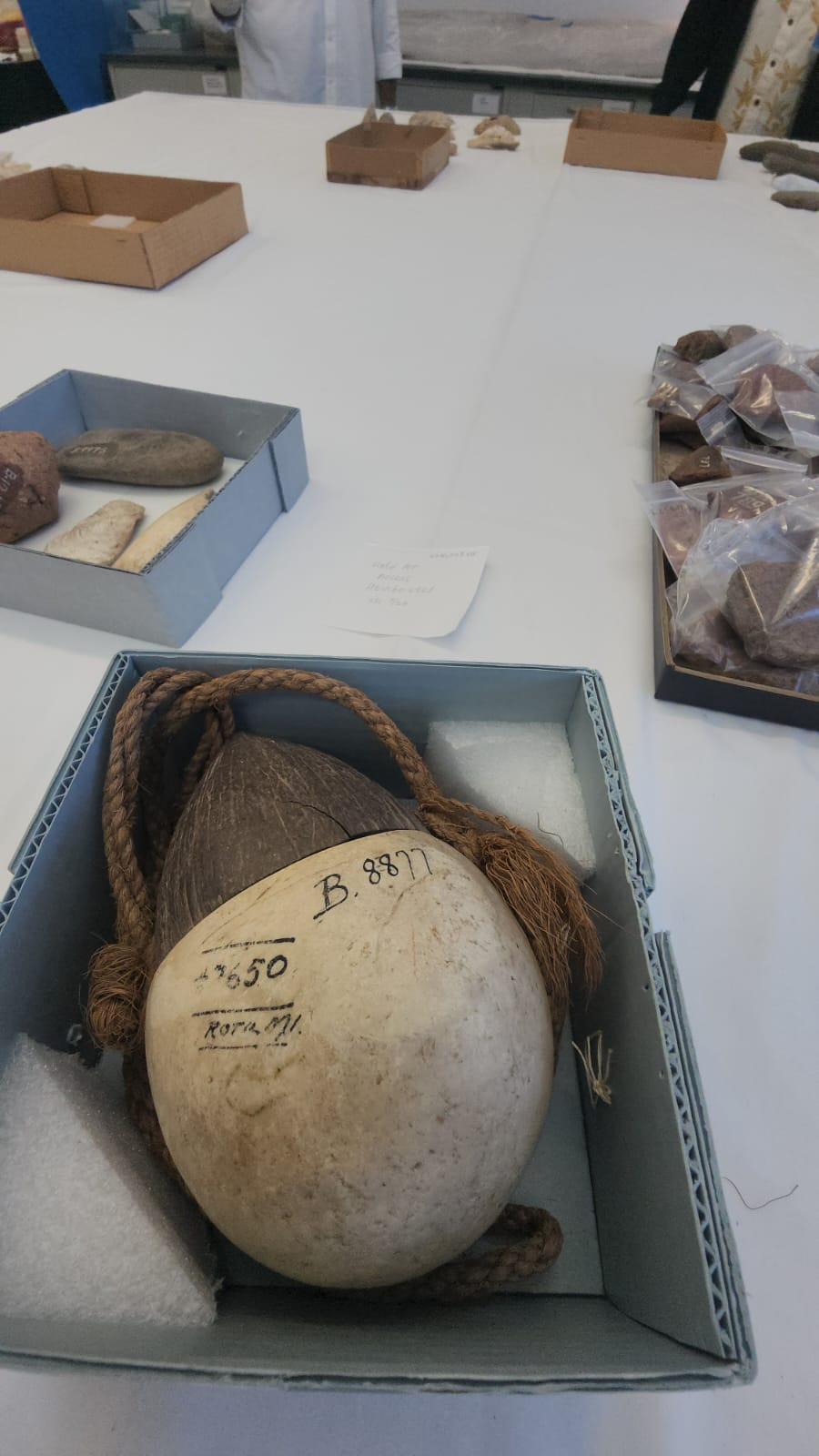
A “poio” from the Hornbostel Collection. It held bait in the stone basin and was allowed to sink into the ocean.
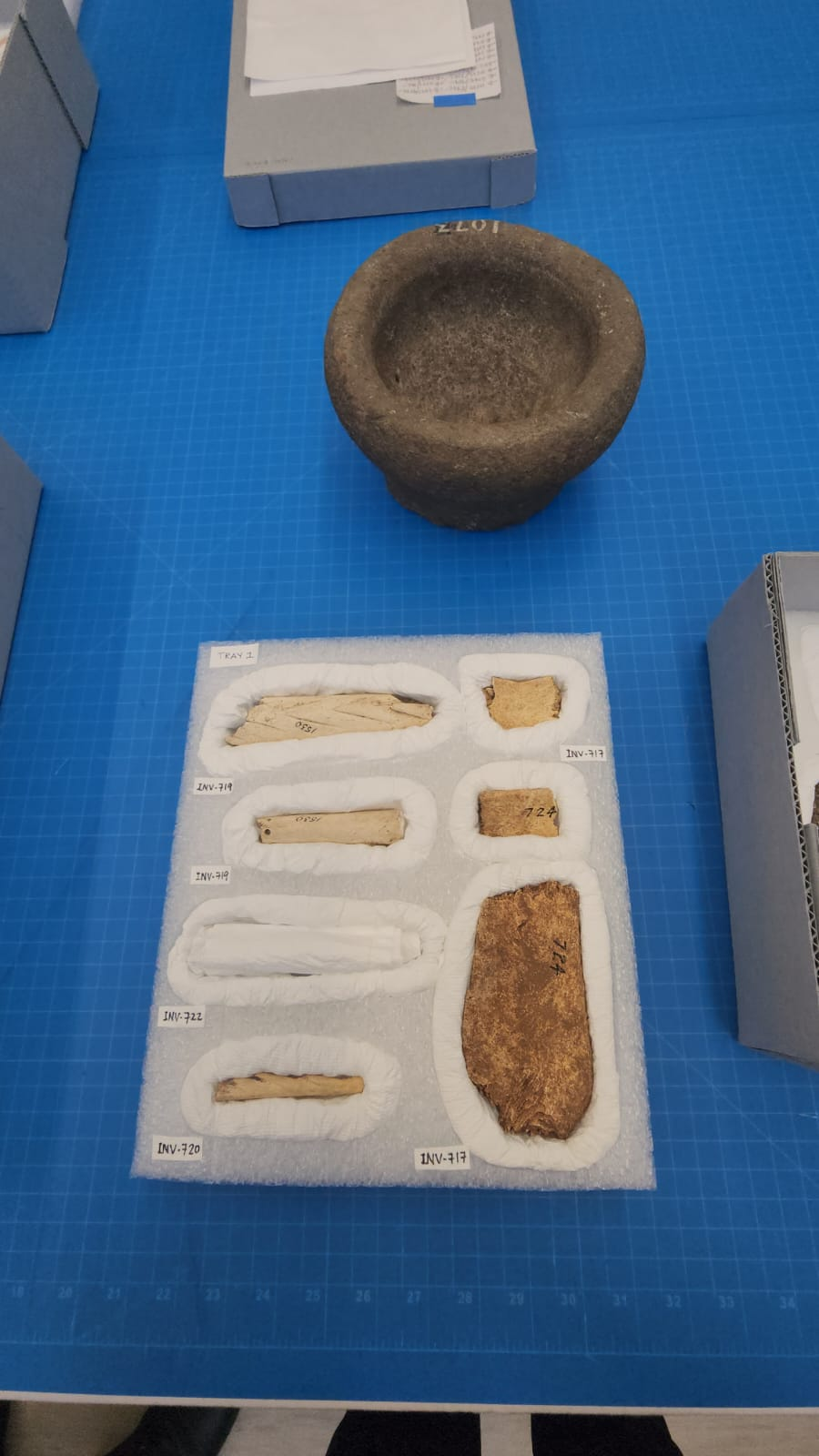
Over 20,00 artifacts from the CNMI are part of the Hornbostel Collection.
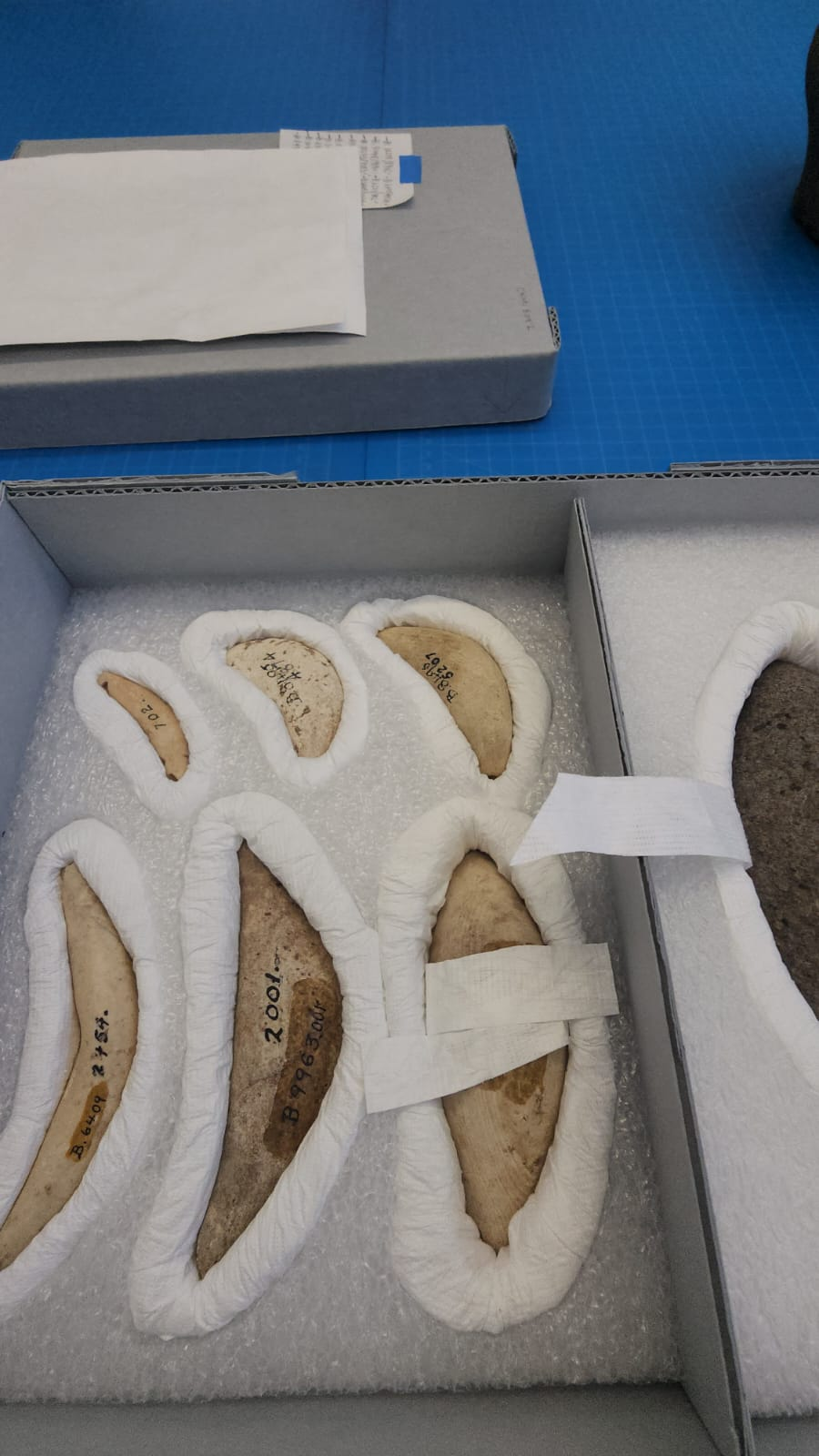
Sinahi in the Hornbostel Collection.
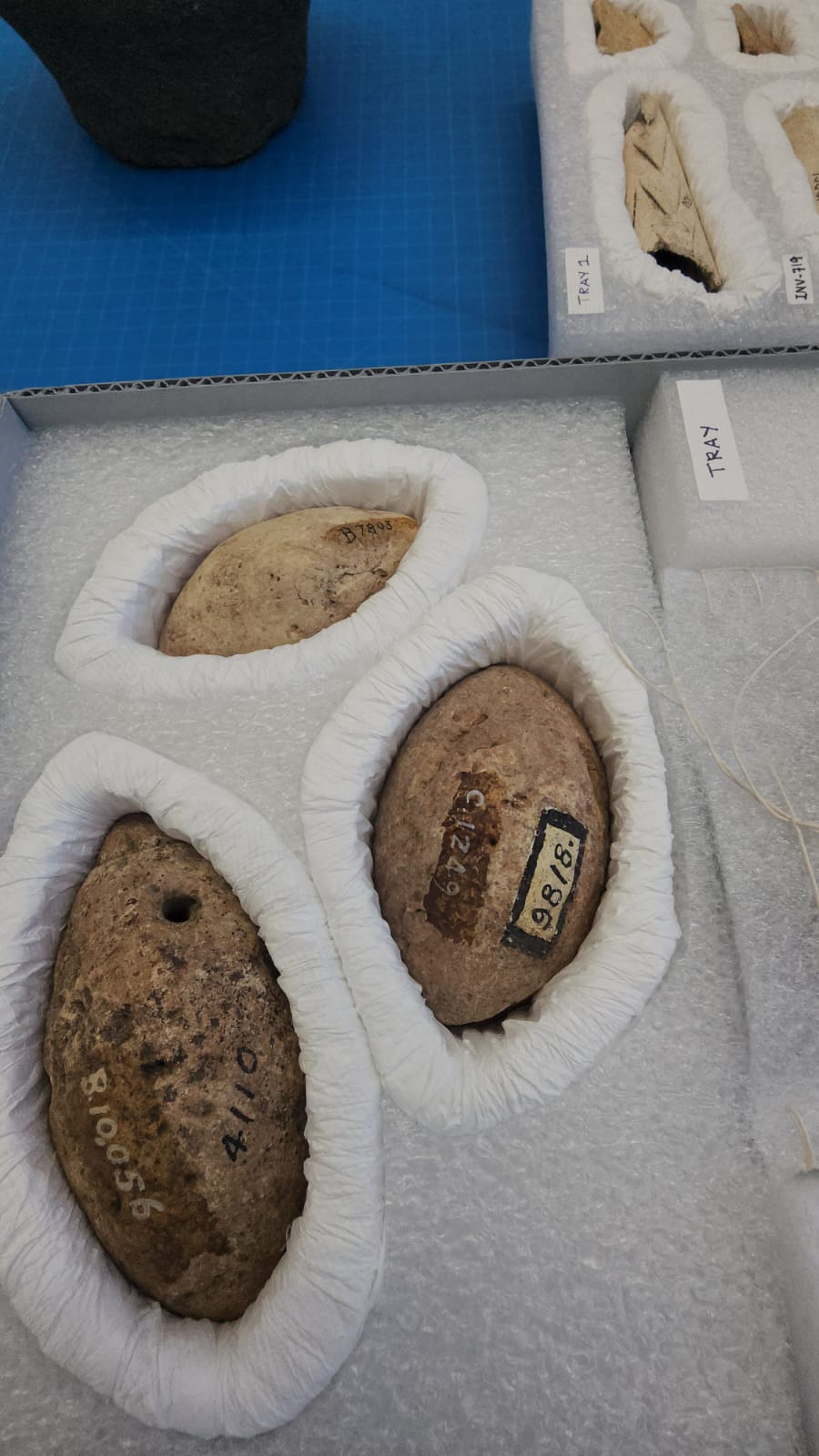
Slingstones in the Hornbostel Collection. One has a hole drilled into it, indicating it was possibly repurposed as a sinker for a net or other fishing implement.
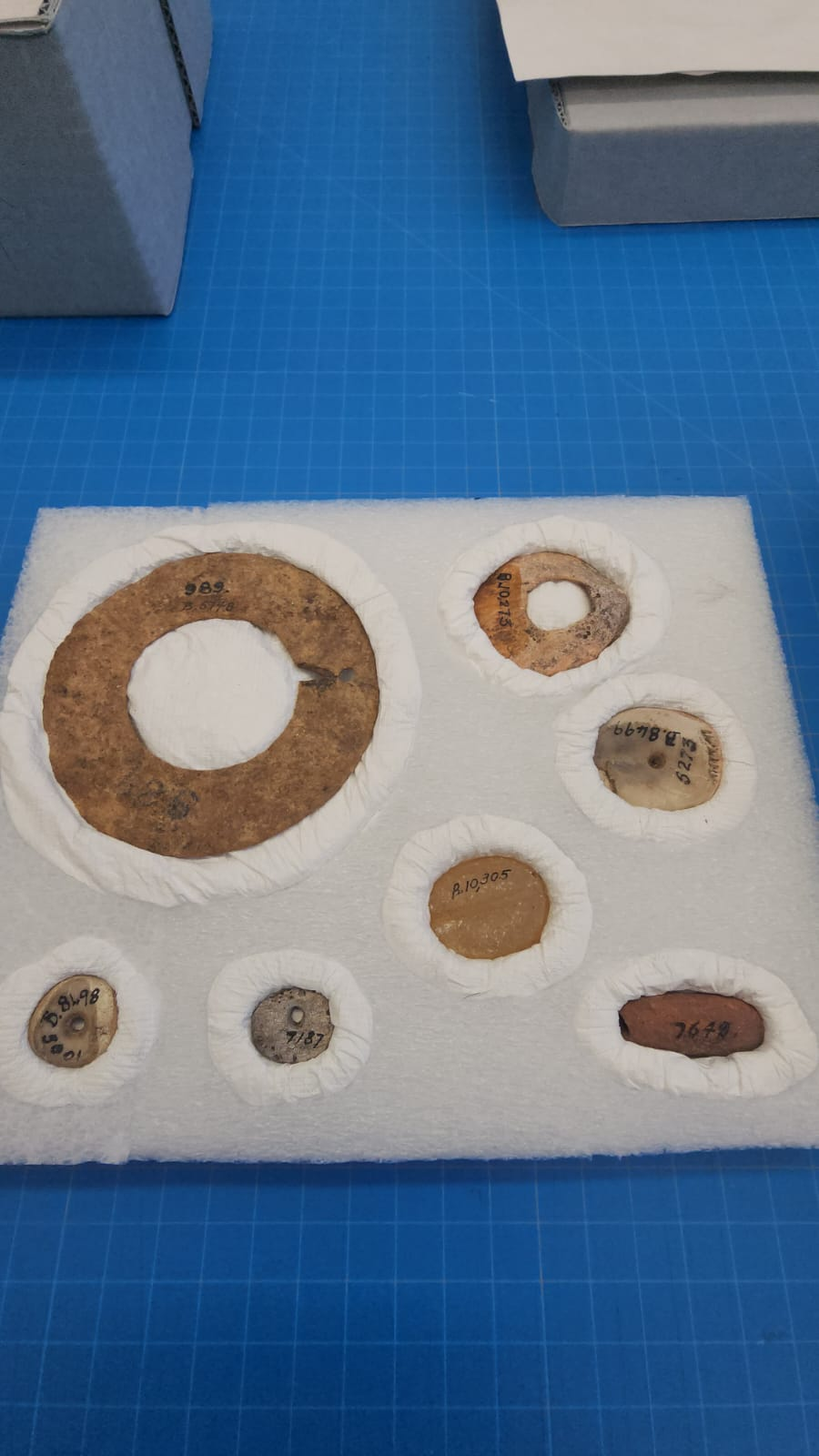
More items in the Hornbostel Collection.
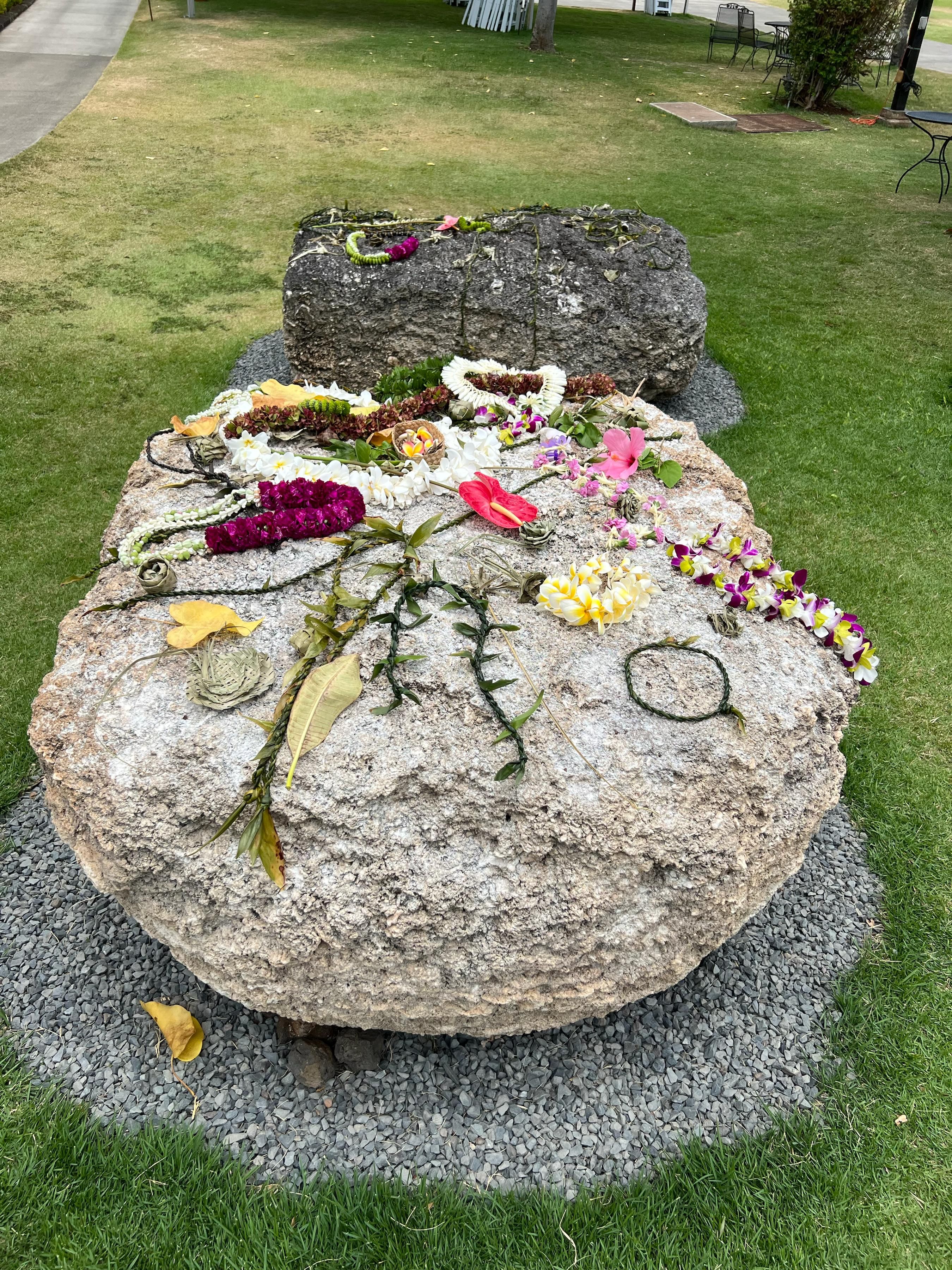
At a ceremony in Hawaii, the public was allowed to honor latte stones, which were displayed on the museum lawn.
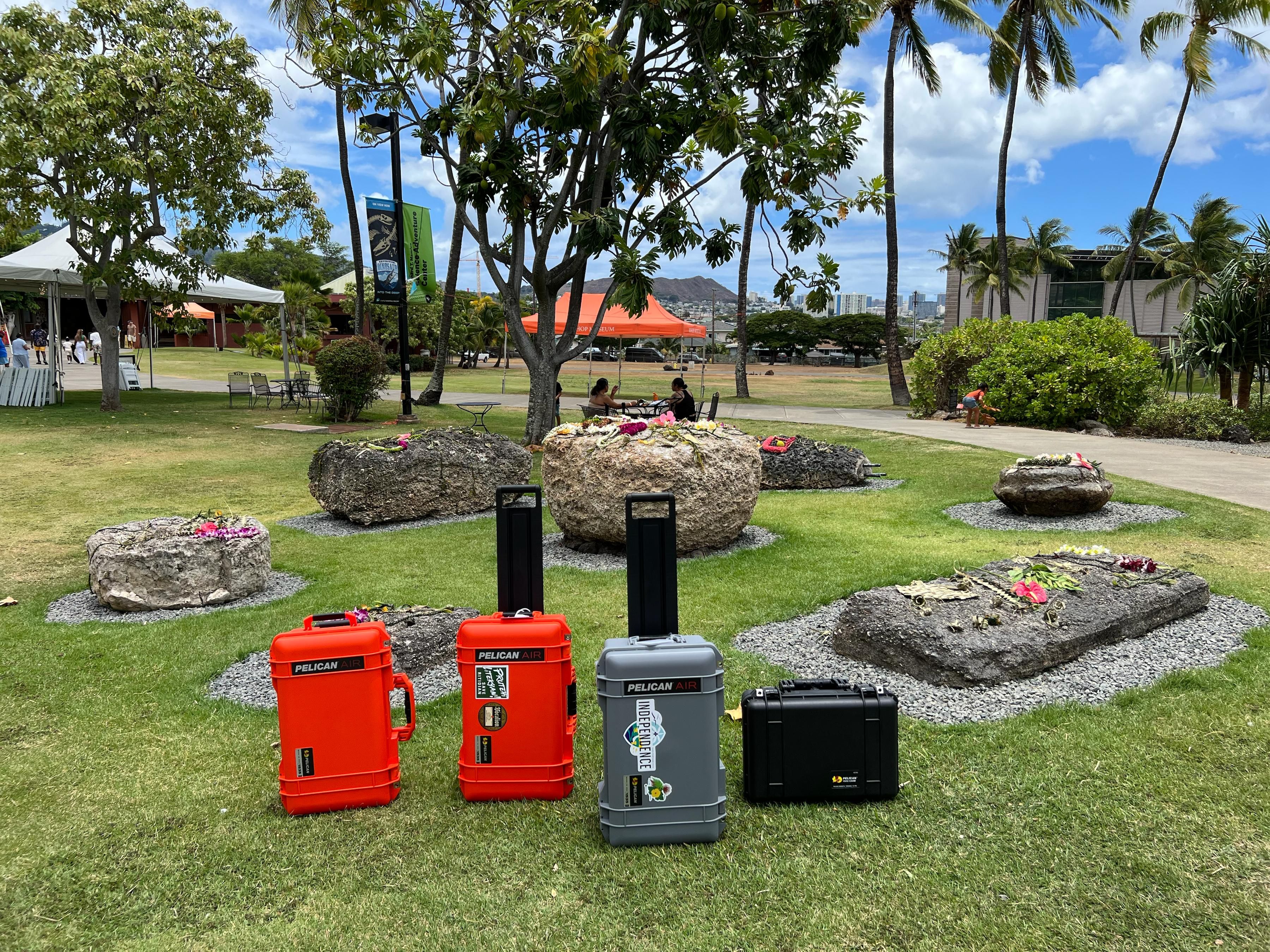
Pieces of luggage filled with artifacts stand in front of the Chamorro latte on the campus of the Bishop Museum.
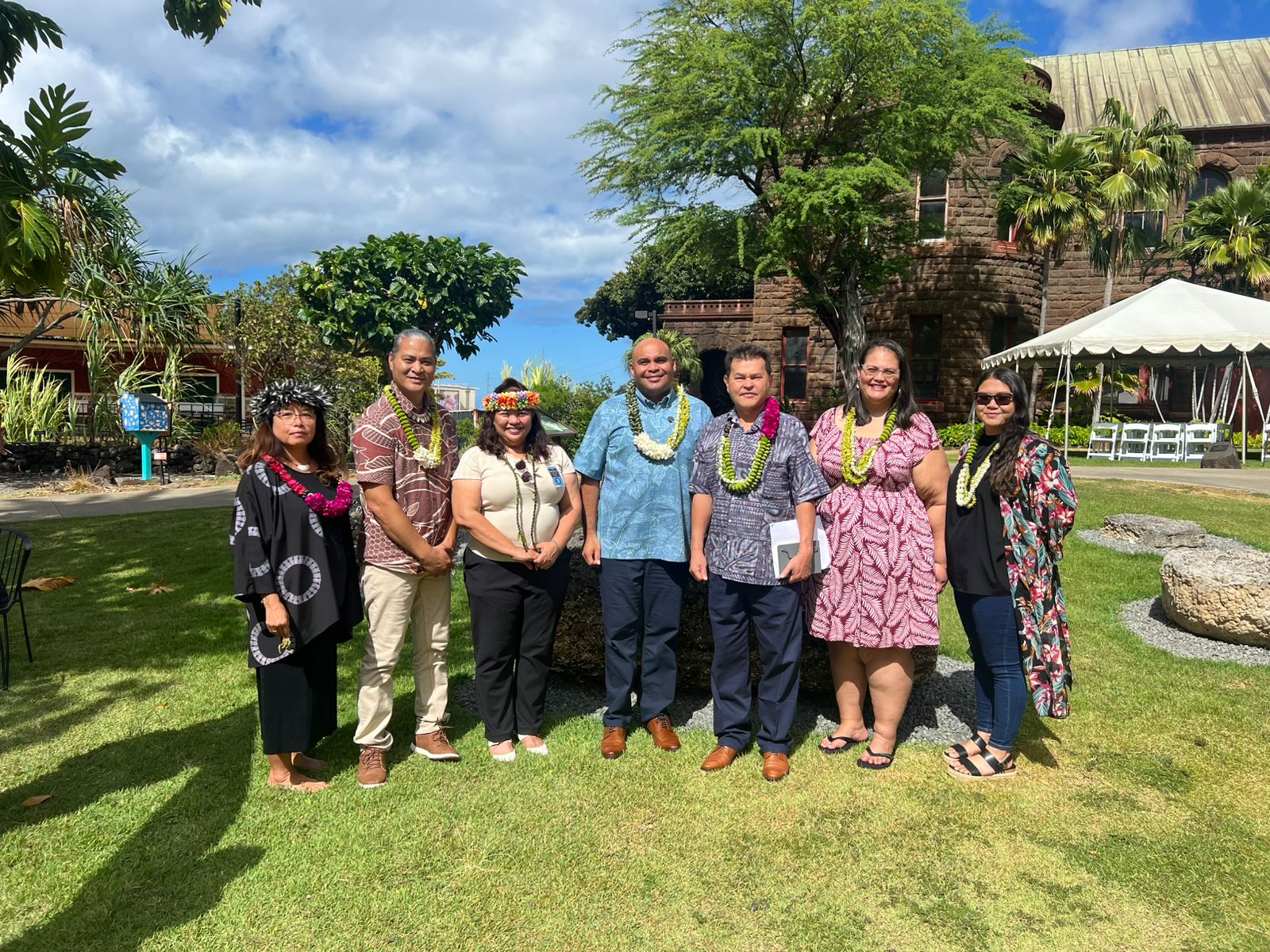
Leonard Leon, 2nd left, Saipan Sen. Celina Babauta, 3rd left, Guam Lt. Gov. Josh Tenorio, center, CNMI Office of the Governor Chief of Staff Henry Hofschneider, 3rd right, on the campus of the Bishop Museum.










